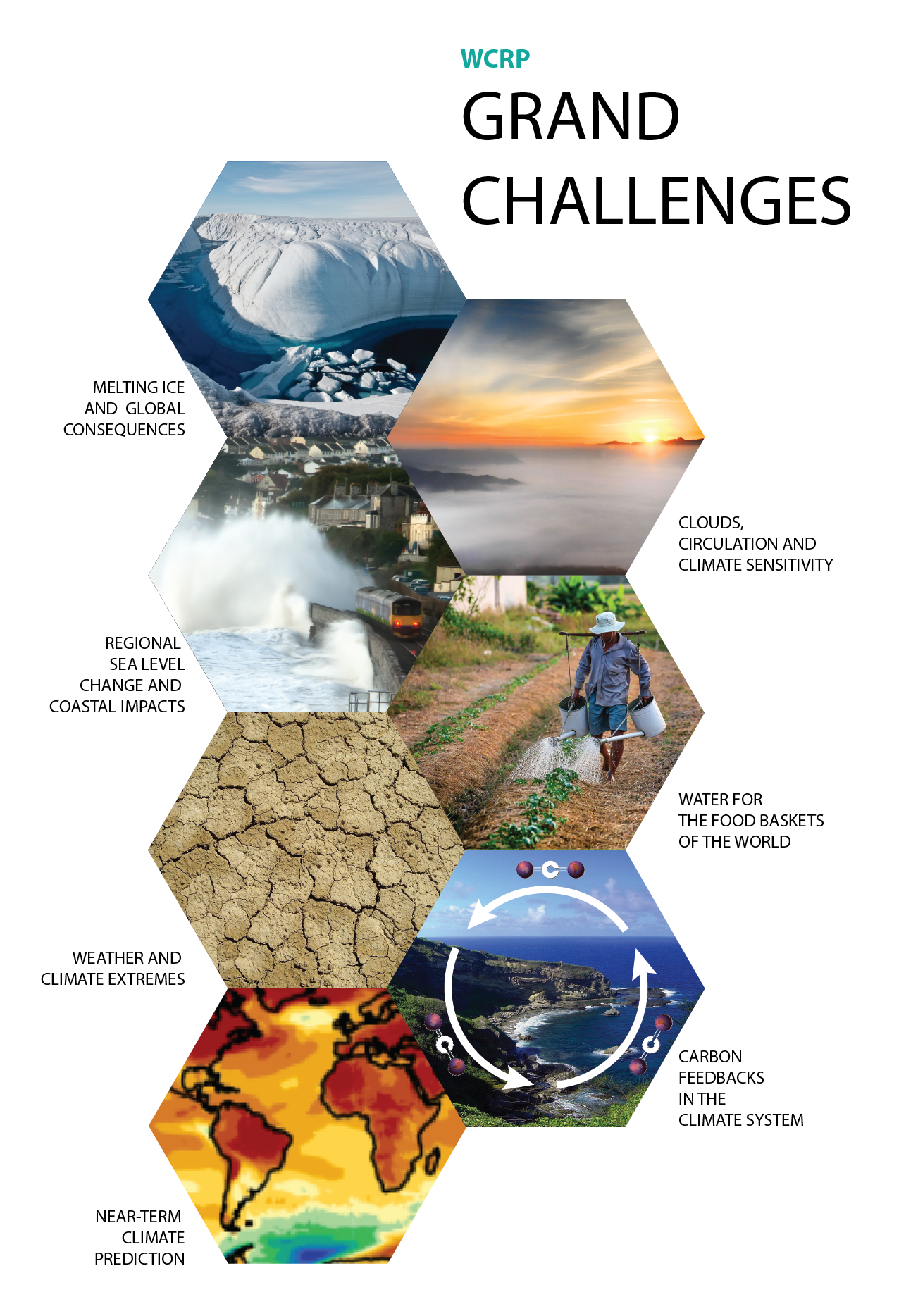WCRP History
The main objectives of WCRP, defined at its inception and still valid today, are to determine the predictability of climate and to determine the effect of human activities on climate.
WCRP has made enormous contributions to advancing climate science over the past 30+ years. As a result of WCRP efforts, it is now possible for climate scientists to monitor, simulate and project global climate with unprecedented accuracy, and provide climate information for use in governance, decision-making and in support of a wide range of practical end-user applications.
India and WCRP
In 2015, Agreement was signed between Indian Institute of Tropical Meteorology (ESSO-IITM), an autonomous organization under the Earth System Science Organization (ESSO), Ministry of Earth Sciences and World Climate Research Program (WCRP), Geneva for setting up of an International Climate Variability and Predictability (CLIVAR) Monsoon Project Office (ICMPO) at ESSO-IITM in Pune.
The ICMPO at ESSO-IITM Pune will be responsible for implementation of (i) intra-seasonal, seasonal and inter-annual variability and predictability of Monsoon systems, in close cooperation with relevant WCRP activities and (ii) development of a CLIVAR “Research Opportunity” on links between the Monsoons and the cryosphere.
ESSO-IITM is a premiere research Institute generating scientific knowledge in the field of meteorology and atmospheric sciences that has potential application in various fields such as agriculture, economics, health, water resources, transportation, communications, etc. It functions as a national centre for basic and applied research in Monsoon meteorology.
The main foci of WCRP research are:
- observing changes in the components of the Earth system (atmosphere, oceans, land and cryosphere) and in the interfaces between these components;
- improving our knowledge and understanding of global and regional climate variability and change, and of the mechanisms responsible for this change;
- assessing and attributing significant trends in global and regional climates;
- developing and improving numerical models that are capable of simulating and assessing the climate system for a wide range of space and time scales; and
- investigating the sensitivity of the climate system to natural and human-induced forcing and estimating the changes resulting from specific disturbing influences.
The organizational structure consists of:
- WCRP Joint Scientific Committee (JSC) Advisory councils
- WCRP Modelling Advisory Council (WMAC)
- WCRP Data Advisory Council (WDAC).
- WCRP Working Groups
- WCRP Core Projects
- WCRP Grand Challenges
- The Joint Planning Staff (JPS)
- Climate and Cryosphere (CliC): CliC encourages and promotes research into the cryosphere in order to improve understanding of the cryosphere and its interactions with the global climate system, and to enhance the ability to use parts of the cryosphere for detection of climate change.
- Climate and Ocean Variability, Predictability and Change (CLIVAR): CLIVAR’s mission is to understand the dynamics, the interaction, and the predictability of the coupled ocean-atmosphere system. To this end it facilitates observations, analysis and predictions of changes in the Earth’s climate system, enabling better understanding of climate variability, predictability and change.
- Global Energy and Water Exchanges (GEWEX): GEWEX is an integrated program of research, observations, and science activities that focuses on the atmospheric, terrestrial, radiative, hydrological, coupled precesses, and interactions that determine the global and regional hydrological cycle, radiation and energy transitions and their involvement in global changes.
- Stratosphere-troposphere Processes And their Role in Climate (SPARC): SPARC coordinates international efforts to bring knowledge of the stratosphere to bear on relevant issues in climate variability and prediction.
In addition, WCRP has the following major projects:
Coordinated Regional Climate Downscaling Experiment (CORDEX): The CORDEX vision is to advance and coordinate the science and application of regional climate downscaling through global partnerships.
WCRP Grand Challenges
The WCRP Grand Challenges represent areas of emphasis in scientific research, modelling, analysis and observations for WCRP and its affiliate projects in the coming decade. They were developed by the WCRP Joint Scientific Committee (JSC) through consultation with WCRP sponsors, stakeholders and affiliate networks of scientists. WCRP promotes the Grand Challenges through community-organized workshops, conferences and strategic planning meetings to identify exciting and high-priority research that requires international partnership and coordination, and that yields “actionable information” for decision makers.
The Grand Challenges:
- are both highly specific and highly focused, identifying a specific barrier preventing progress in a critical area of climate science;
- enable the development of targeted research efforts with the likelihood of significant progress over 5-10 years, even if their ultimate success is uncertain;
- enable the implementation of effective and measurable performance metrics;
- are transformative – a Grand Challenge should bring the best minds to the table (voluntarily), building and strengthening communities of collaborative innovators, perhaps also extending beyond “in-house expertise”;
- capture the public’s imagination – teams of renowned scientists working to solve pressing challenges; and
- offer compelling storylines to capture the interest of media and the public

- Melting Ice and Global Consequences Clouds,
- Circulation and Climate Sensitivity
- Carbon Feedbacks in the Climate System
- Weather and Climate Extremes
- Water for the Food Baskets of the World
- Regional Sea-Level Change and Coastal Impacts
- Near-term Climate Prediction


